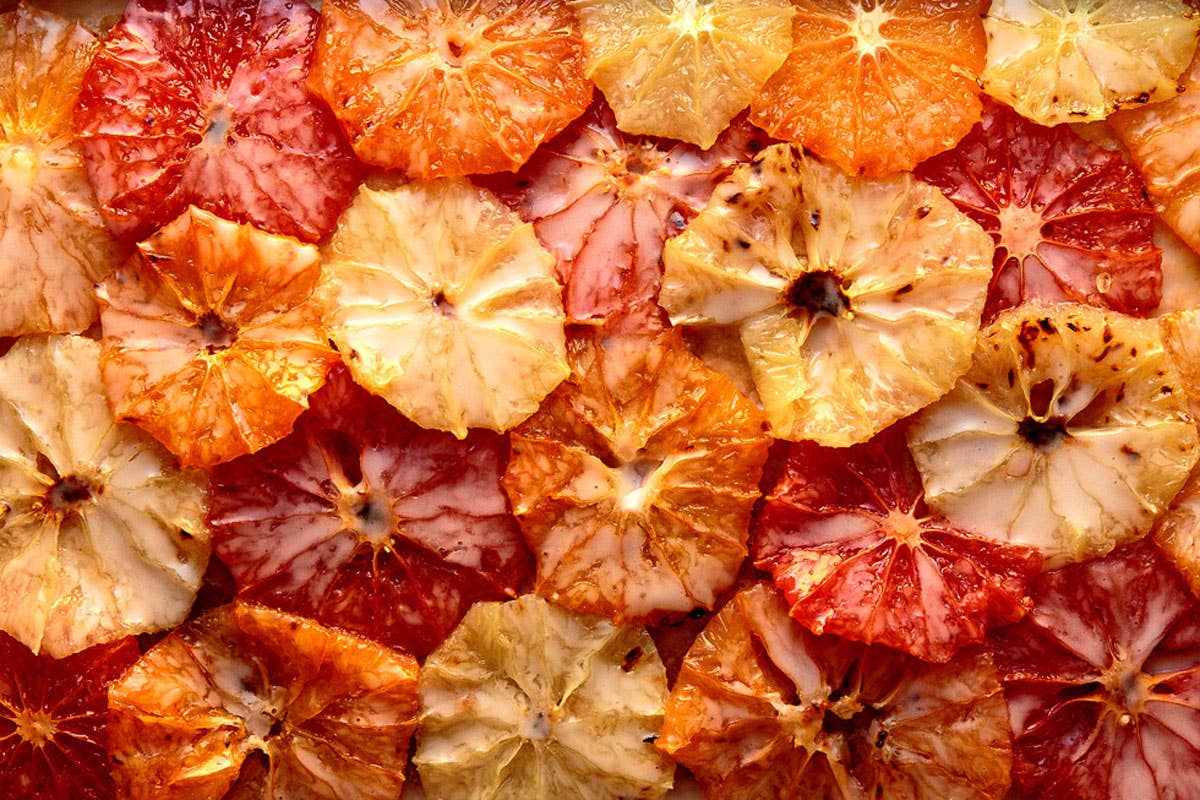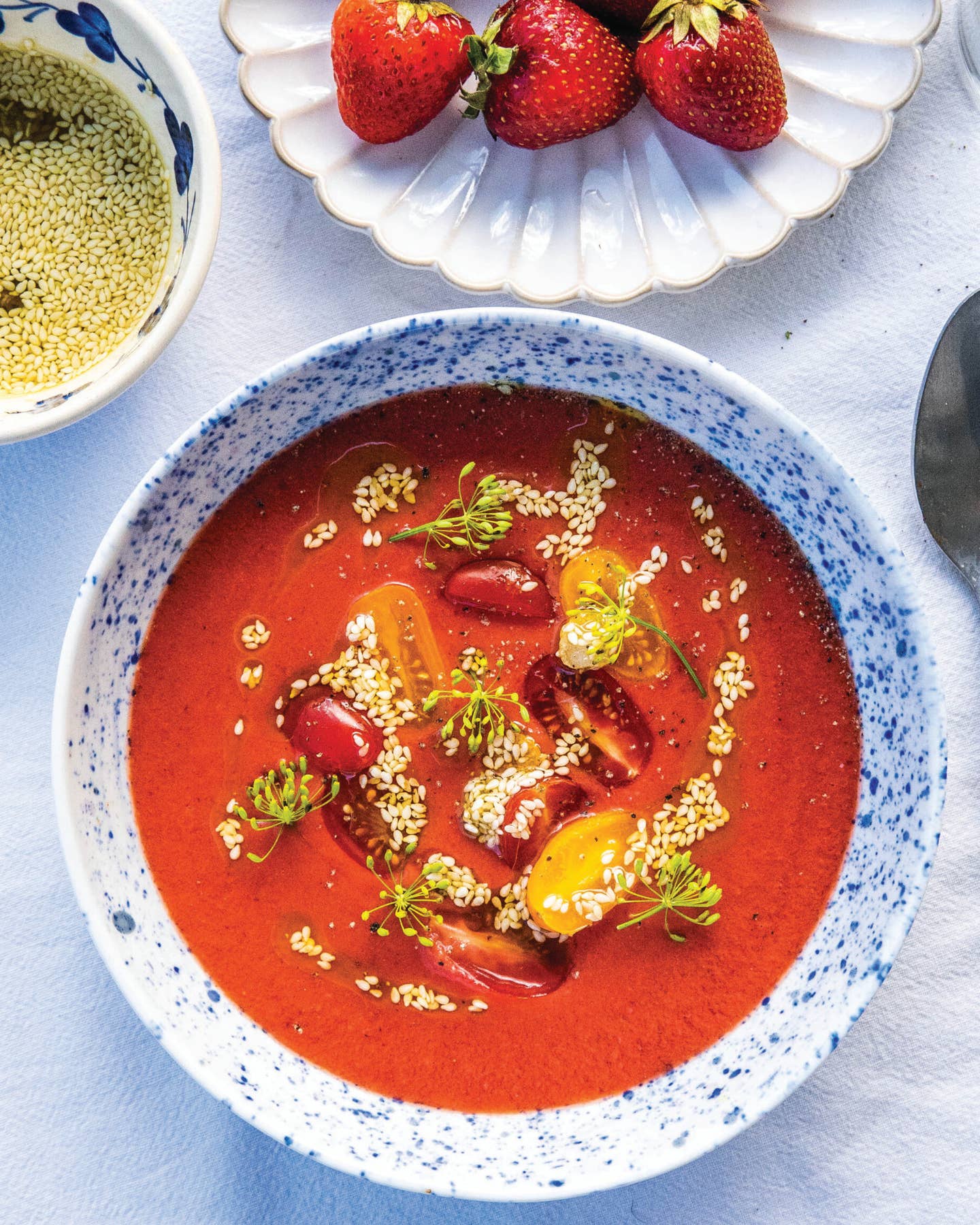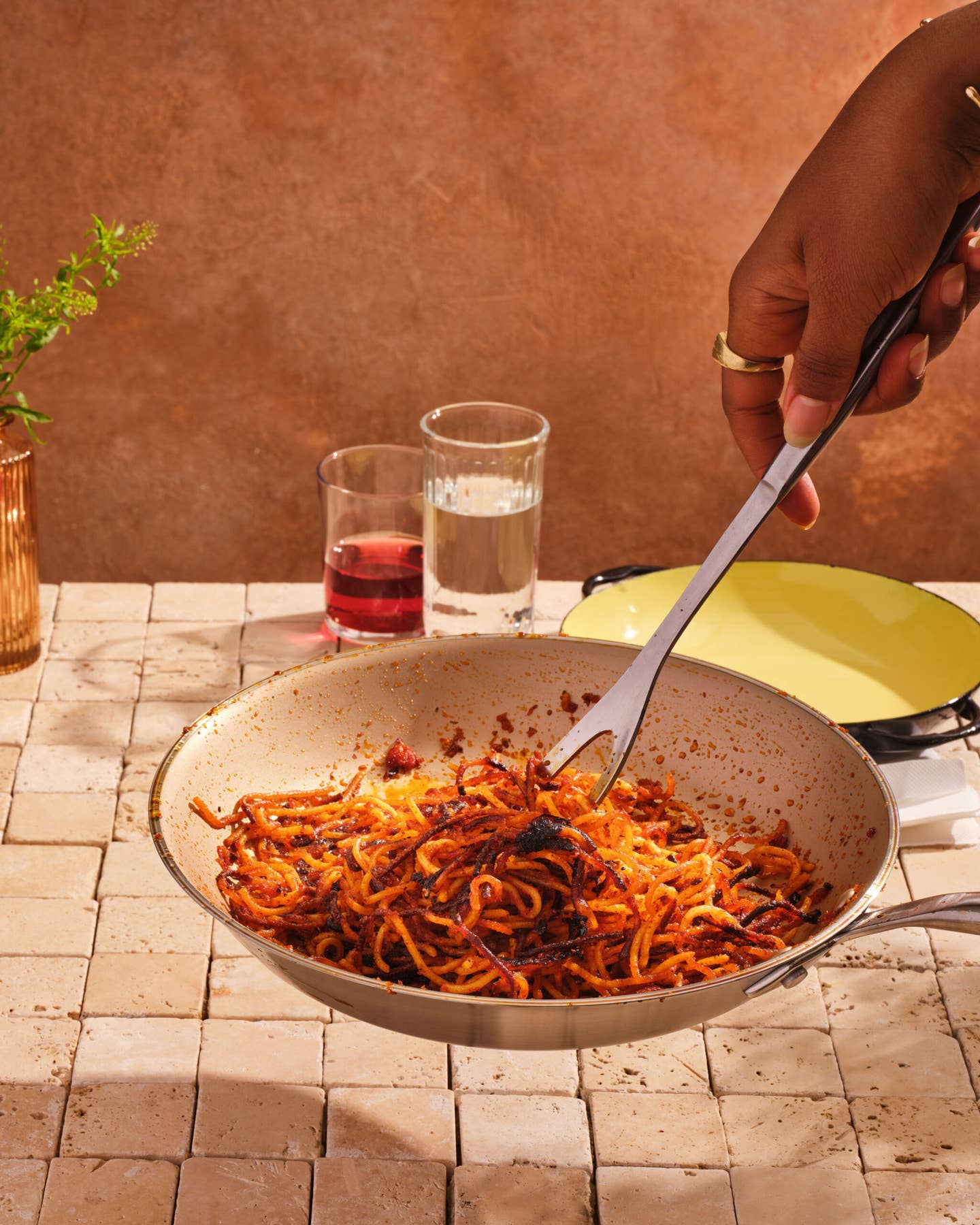
Winter’s Brightest Jewel
Grapefruit, especially from Florida’s Treasure Coast, is our favorite cold-weather fruit
As soon as the dew has dried from the trees along Florida's Indian River, Sheffield Green sets up an orchard ladder and climbs toward its tapered top, his arms wrapped in socks to guard against thorny branches. Green is 67, and he's been at this job for 49 years. He doesn't earn much, but if the world were a fairer place, he'd make a lot more. Green and the other day laborers he works with are responsible for harvesting some of the heaviest, juiciest, most flavorful citrus on earth—the exemplars of a fruit so good that it's named for paradise: _Citrus paradisi._Grapefruit. Florida is the world's leading producer, and in Indian River County, they grow it like nowhere else.
It's an accident of place—a confluence of subtropical warmth, temperate Gulf Stream breezes, plentiful moisture, and well-drained sandy soil—that makes this region, named for a ribbon of lagoon along Florida's Treasure Coast three hours north of Miami, grapefruit heaven. And it's a happy circumstance of time that in late February and March, just as the lingering Northeast chill has me yearning for grapefruit's sunniness, the fruit peaks. Though even supermarket citrus is great this time of year, I usually indulge in a mail-order box straight from a groveside citrus stand. Juicy and sweet-tart, it's just what I want to devour—out of hand, juiced for cocktails or a marinade, segmented for a salad, frozen for granita, broiled or grilled—to coax me out of my winter blues.
This year, feeling a bit bluer than usual, I decided rather than the grapefruit coming to me, I would go to the grapefruit. And that's how I found myself one recent morning, watching Green and others dump loads of just-plucked fruit into bins to be hauled to the nearby packinghouse. Unlike Florida oranges, most of which are processed for juice, grapefruit is mainly sold fresh, so it's primarily handpicked, grove owner T.P. Kennedy told me as we walked the wide rows of laden trees. Especially in wet, warm Indian River, where the skin stretches thinly over the juice-swelled flesh, machine harvesters would bruise the fruit.
Dtam Som Oo (Thai Pomelo Salad)
Sweet pomelo pairs beautifully with chiles, peanuts, and mint in this recipe for a classic Thai salad from Talde in Brooklyn, New York. See the recipe for Dtam Som Oo »
Not that you won't find marks on his grapefruit. The 35-year-old scion of a family that's grown grapefruit here since 1909, Kennedy pulled a plump specimen from a field bin and pointed out the “ring spot” where it had rested against another in the grapelike cluster from which the citrus gets its common name. A natural hybrid of a sweet orange and the massive yellow pomelo, two ancient Asian species brought to the West Indies by Europeans, grapefruit made its way from Barbados, where it was first documented in 1750, to Florida about a century before Kennedy's great-great-grandfather planted his first 25 acres.
Then, nearly all grapefruit were white. Not anymore. Kennedy took out a pocketknife and cut me a wedge of fruit. Beneath its yellow-pink skin, the flesh was the color of a Florida sunset, the result of a mutation bred into cultivars. Red grapefruit make up 85 percent of Kennedy's current crop, and in Texas, the second-biggest grapefruit state (followed by California), that percentage is higher. It's easy to understand why consumers prefer them, though scientists insist there is no corollary between sugar content and color. Those crimson insides simply look more delicious.
Regardless, that flaming fruit tasted candy-sweet. It was also mightily refreshing. At its peak, grapefruit takes on a sublime balance: Its sugars commingle with the tart citric acid and bitter phenolics—naringin and lim-onene—that give it its tang. This one was bursting with ripeness.
From the grove, we chased the grapefruit to the packinghouse where they are sorted. Scarred, misshapen misfits (of which, in Indian River, there are few) go to processors, where they are squeezed for juice and their by-products collected—essential oils for flavoring agents, seed extract for cosmetics, peels for cattle feed. The choicest fruits are coddled all the way to the crate. They're washed, dried, and waxed, then graded with the help of a laser that measures sugar content and a rapid-fire camera that photographs each beauty in eight different poses to capture its size and shape. As the golden oblate spheres bumped along the conveyor belt, it was hard not to anthropomorphize them. They looked as cute as those yellow munching dots in a Pac-Man game, which put me in mind of a meal. So I headed for Miami, where chefs use the local crop as a foil to all sorts of Florida seafood.
Downtown at restaurant Area 31, as I discovered, the fruit offsets rich crab in a salad strewn with hearts of palm, avocado, coconut, and ginger. At Michy's, chef Michelle Bernstein cures seafood in grapefruit juice. Less acidic than the typical lemon or lime juice, it makes for a mellower ceviche, allowing the seafood's flavors to shine. And atop a creamy risotto, the pleasingly bitter fruit highlights the sweetness of seared Florida scallops.
Rum Broiled Grapefruit
Back in New York, I made a beeline for the restaurant Boulud Sud. I wanted to indulge in perhaps the grandest of all grapefruit dishes, the grapefruit givré. The fruit is scooped out and frozen, and then the shell is filled with a delicious array: grapefruit sorbet, jam, segments, and tuile; chewy rose-flavored candy; nutty halvah crumble; and, on top, a crown of cotton-candy-like spun halvah. Buoyant and sweet but with a bracing finish—like a soprano's aria at the Metropolitan Opera across the street—it's an invigorating work of art.
I may not have the chops to execute such a dish, but at home with my box of Florida fruit, I can douse citrus halves in rum and run them under my broiler, where they take on a caramel depth. I can fan slices of the broiled fruit atop a sweet, dense cake flavored with zest. I can chill grapefruit segments in Cointreau-spiked gelatin for a throwback terrine with jiggly charm.
I love to toss the brisk fruit into a salad with parsley and olives, and I've even been inspired to seek out its big, sweet parent fruit, pomelo, to pair with chiles, peanuts, and mint for dtam som oo. I've also found that grapefruit marries just as beautifully with pork as it does with seafood. I roast tenderloin in a mix of fennel, cumin, paprika, grapefruit juice, and freshly grated zest, which tenderizes and brightens the meat's flavor.
Grapefruit Terrine
Grapefruit is suspended in orange-liqueur-spiked gelatin in this recipe adapted from one in Stéphane Reynaud’s book Terrine (Phaidon Press, 2008). See the recipe for Grapefruit Terrine »
I've even mastered a few chef-y grapefruit tricks of my own. I learned to supreme the fruit, cutting its flesh free of the pith and membranes, so that I could stir it into canola oil, where its hundreds of juice vesicles separate from each other like so many raindrop-shape beads. On ice cream or sorbet, they make a knockout garnish. Bryce Shuman of Manhattan's Betony restaurant taught me to dehydrate grapefruit segments slowly in my oven until they take on a density that amps up the pleasure of snacking on the fruit. I also adopted Betony's oleo-saccharum, an aromatic syrup made by storing peels in sugar, where they are left to weep their fragrant oils. The syrup is a powerful match for tequila in a tarragon-laced Verano cocktail, and the leftover candied peels are terrific mixed into yogurt.
That's one of the great appeals of grapefruit; nothing goes to waste. The zest zips up vegetables, grains, and desserts. The juice improves drinks from rummy swizzles to vodka-laced salty dogs. And there are zillions of culinary uses for the flesh—though, despite them all, I still adore grapefruit fresh and unadorned.
As a kid in the 1960s, I was often served half a grapefruit at breakfast. Set in one of my mother's pastel Boontonware bowls, the citrus was liberally sprinkled with sugar to mask its initial tartness. I'd scoop up the wedge-shape bites, relishing each sweet beginning and wincing through every bitter end. It always felt like the morning's first lesson, a reminder of life’s highs and lows. Hesitant at first, I'd end up squeezing the scooped-out rind for juice. By now I've learned to expect the bitter with the sweet, and with the fruit, as in life, I am still relishing every last drop.
Keep Reading
Continue to Next Story










